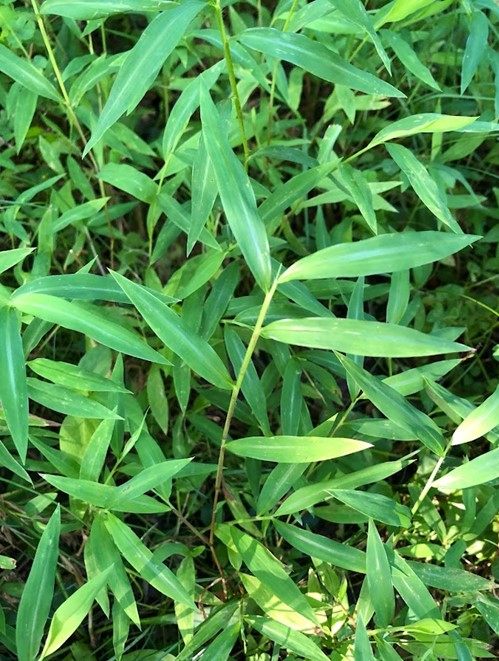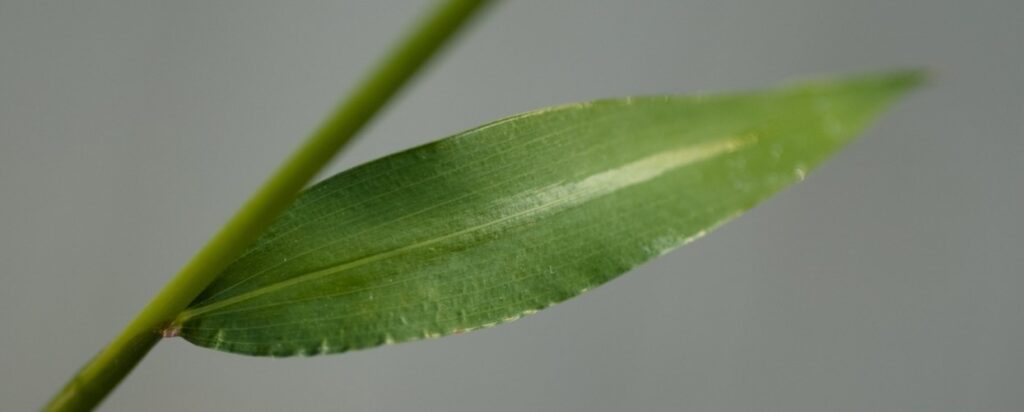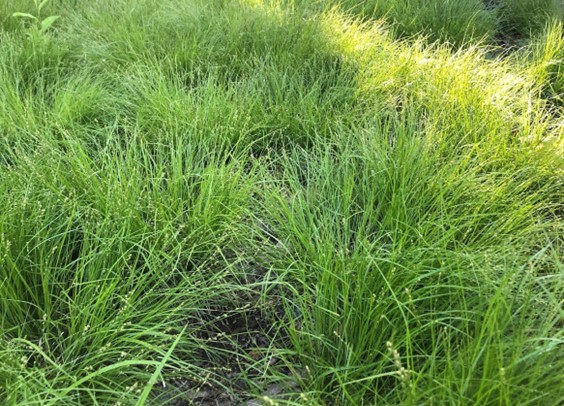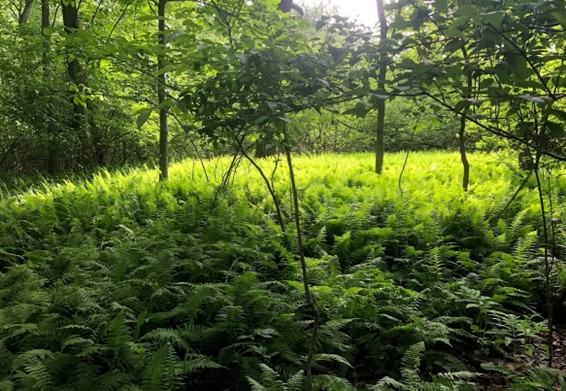Main Content

Photo credit: Jean Epiphan, Rutgers University

Photo credit Pete Nitzsche, Rutgers University
August
The goal of Rutgers Cooperative Extension’s “Invasive Species of the Month” is to highlight those organisms that are non-native to New Jersey and cause economic or environmental harm, or harm to human health. We can all help prevent the spread of invasives by learning which species are a threat to our ecosystems.
Stiltgrass (Microstegium vimineum)
Japanese stiltgrass (Microstegium vimineum), or simply referred to as stiltgrass, is an annual grass that grows from 12 to 36 inches tall. Its narrow stem has segments separated by joints; each segment produces a leaf, and each has a silvery-pearlescent midvein and leaf margin. It was inadvertently introduced to the United States in 1919 in shipping packaging and has since become widespread. Stiltgrass spreads throughout forests, lawns, gardens, and roadsides. Stiltgrass is not bought and sold in the United States. It is considered an invasive weed in every environment.
Ecological threat– Stiltgrass invasion causes habitat loss or degradation in any environment, but especially throughout forests and woodlands. It spreads rapidly to create dense monocultural expanses that displace indigenous forest plants like ferns and spring ephemerals. The loss of forest plants causes trophic cascades as they are displaced; the insects, pollinators, and animals in the food web that depend on forest plants become displaced as well. This results in loss of biodiversity. Stiltgrass also inhibits germination and growth of native tree seedlings, which substantially threatens the structure and diversity of future forest canopies. Stiltgrass also changes the environments they invade by altering soil microbial communities, which facilitates its own spread as well as the spread of other invasive plants.
Method of spread– Stiltgrass produces abundant seeds in late summer and prolifically germinates in spring. Stiltgrass seeds can be carried on lawn mowing machinery, boots and laces, as well as fur of deer and other woodland animals; this is how it easily spreads to new environments.

Preferred habitat– Stiltgrass prefers rich, moist to wet soil in dappled or part shade. However, it can still thrive and spread in full sun to full shade as well as in a range of soil conditions.
Removal methods– Stiltgrass control is difficult, but the goal is removal or control before seed-set begins (usually in mid-late August, but sometimes earlier) to limit seed dispersal and germination next year. New invasions, if small, can be easily pulled out by hand. Large infestations can be mowed right before seed-set. Mowing earlier in the season will only encourage stiltgrass to grow at a lower height to set seed. If weeding is performed after August, the plants should be bagged and thrown away in garbage. Do not compost. Herbicides such as glyphosate and imazapyr can be used for control; follow the herbicide label instructions for proper use. Once stiltgrass seeds emerge, herbicide application is not useful. Germination of seeds can be prevented with a layer thick mulch or by using pre-emergent herbicides in early spring. For more information on control methods see the Rutgers Factsheet on Japanese Stiltgrass Control.
Native alternatives–

Deertongue grass (Dichanthelium clandestinum) is a broad-leaved perennial grass that grows 2-3 feet tall, sometimes up to 4ft. It tolerates a wide range of site conditions and soil types, but prefers moist, well-drained soil in part shade. It is common grass of forest edges and woodlands.

Star sedge (Carex radiata) is a perennial grass-like plant, a sedge, that grows 1-2 feet tall. It prefers moist soil and part shade but can tolerate wetland conditions and more sun or more shade. Star sedge is naturally found in lowland forests and wetlands.

New York Fern (Thelypteris noveboracensis) often is found growing in forests where stiltgrass invades in lowlands and uplands. When New York fern is unhampered, it spreads by rhizomes and carpets the forest floor. It is also an excellent species for shade gardens and for use as a groundcover. It usually grows up to 2 feet tall and prefers dappled sun to part shade.
Additional native species include bluejoint grass (Calamagrostis canadensis), whitegrass (Leersia virginica), rice cutgrass (Leersia oryzoides), broom sedge (Carex scoparia), rosy sedge (Carex rosea), sensitive fern (Onoclea sensibilis), hay-scented fern (Dennstaedtia punctilobula), and clearweed (Pilea pumila).
Additional resources for controlling stiltgrass:
Rutgers Factsheet on Japanese Stiltgrass Control
USDA National Invasive Species Center- Japanese Stiltgrass
USDA Weed of the Week – Japanese stiltgrass
New Jersey Invasive Species Strike Team Fact Sheets
The goal of Rutgers Cooperative Extension’s “Invasive Species of the Month” is to highlight those organisms that are non-native to New Jersey and cause economic or environmental harm, or harm to human health. We can all help prevent the spread of invasives by learning which species are a threat to our ecosystems.